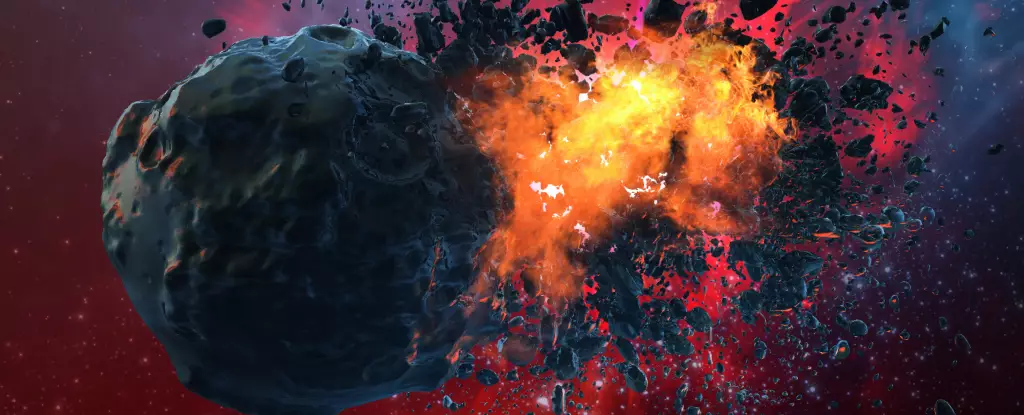As humanity advances its understanding of cosmic phenomena, the discovery of potentially dangerous asteroids has prompted significant discussions about planetary defense. Recently, experts flagged an asteroid, designated 2024 YR4, with an unusual probability of impacting Earth on December 22, 2032. The chances of a catastrophic encounter stand at 3.1 percent, marking it as a notable potential threat. However, experts from space agencies have urged calmness, emphasizing that preparedness and technological advancements provide a robust response against such celestial challenges.
The concern about asteroids striking Earth isn’t new; however, modern forecasting techniques have allowed scientists to quantify these risks more accurately. The rise in the probability for the asteroid 2024 YR4 to strike is a reminder that while the odds remain relatively low, they require attention. Richard Moissl, head of the European Space Agency’s planetary defense office, reassures the public by stating, “Don’t panic.” This highlights a crucial aspect of effective communication regarding scientific threats – the need to inform without inciting unnecessary fear.
Astronomers continue to gather data, and predictions about the asteroid’s trajectory are expected to fluctuate as new observations are made. The increasing awareness of this potential impact instigates discussions not only about immediate defense tactics but also about long-term monitoring and readiness.
With various strategies at their disposal, current methodologies range from non-invasive approaches to more aggressive tactics. The success of NASA’s Double Asteroid Redirection Test (DART) in 2022, where a spacecraft altered the orbit of the asteroid Dimorphos, showcases the efficacy of direct engagement. Such missions serve as proof-of-concept for more ambitious planetary defense initiatives.
Non-invasive techniques, like the gravity tractor method, involve maneuvering a spacecraft into proximity with the asteroid to utilize gravitational forces for a gentle nudge. Furthermore, a technique which involves exerting ion thrust near the asteroid adds to the variety of options that scientists can employ without risking fragmentation or other unpredictable consequences.
Another intriguing but less conventional method suggests altering an asteroid’s surface characteristics. By spray painting one side of the asteroid to change its reflectivity, it could gradually shift its trajectory due to the forces exerted by sunlight—a process known as the Yarkovsky effect. While imaginative, such strategies require timely execution, underscoring the importance of early detection and timely intervention.
In scenarios where all else may fail, the discussion of nuclear intervention arises. However, the idea of deploying nuclear devices in space carries complex ethical, political, and legal dilemmas. Unlike sensationalized portrayals in Hollywood blockbusters, the theoretical application involves detonating a bomb near the asteroid rather than drilling into it.
This proximity detonation method has been studied through simulations, revealing that x-rays from the nuclear explosion could effectively vaporize portions of the asteroid, creating thrust that would alter its path. However, the unpredictability of fragmented remnants poses further risks to Earth’s safety. The ineffectiveness of such tools reflects the broader challenge of ensuring that protective measures do not inadvertently precipitate even greater hazards.
Addressing asteroid threats goes beyond technological solutions; it demands coordinated global strategies. Experts advocate for an international dialogue to establish safety protocols and share research efforts regarding planetary defense. Decisions on how to mitigate such threats ultimately rest with world leaders, highlighting the intersection of science, policy, and ethics in ensuring global safety.
The potential impact zone of any asteroid presents opportunities for planning responses – evacuation protocols and resource allocation could become pivotal in minimizing loss of life should these scenarios progress. Moissl notes that with an estimated seven and a half years until the potential impact, there is ample time to prepare, underlining the vast capabilities of science to avert disasters.
Ultimately, the discussions surrounding asteroid 2024 YR4 serve as a reminder of humanity’s dual vulnerability and resilience. While the odds are significantly skewed in favor of safety—with a 97 percent likelihood that the asteroid will not collide with Earth—the reality of deflecting celestial bodies forms a crucial aspect of our future as an interplanetary civilization. The synthesis of innovation, global cooperation, and proactive readiness stands as humanity’s strongest defense against unpredictable cosmic entities.


Leave a Reply